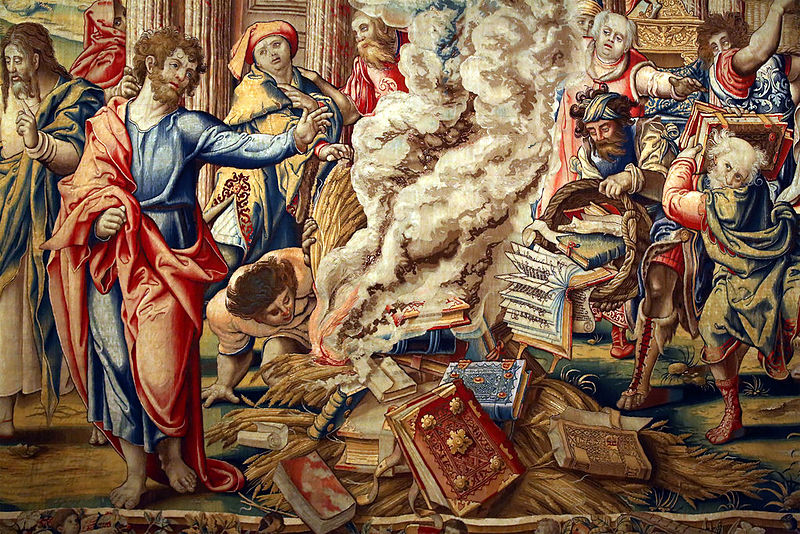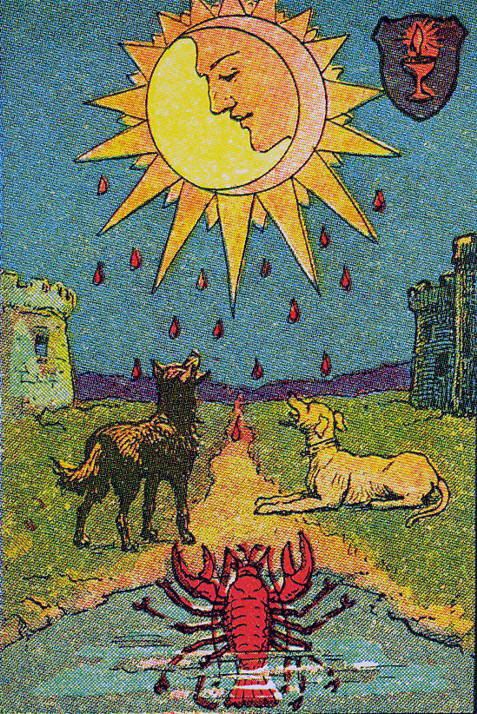St. John Chrysostom exhorting Aelia Eudoxia. Note how the Empress—the spouse of the Roman Emperor Arcadius—, in this painting by Jean-Paul Laurens, has people in her Byzantine entourage who are not whites.
Editor’s note: In a nationalist forum last month a commenter said:
A BS narrative that makes no sense. The idea that Jews created Christianity to subjugate the world is absurd and has no basis in historical fact. Anyone with a basic knowledge of history knows that anti-Jewish Rome and Byzantium spread Christianity—to the Jews disfavour.
It is true that some Jews suffered with the Christian emperors from the times of Constantine, but it cannot be said that the spread of Christianity was unfavourable to them. Quite the contrary: by the time of the reign of Theodosius II only two religions were legal in the Roman Empire: Judaism and Christianity! Not gratuitously I called ‘Apocalypse for Whites’ my translations of Evropa Soberana’s book on Judea vs. Rome.
The mentioned commenter does not seem to understand the double-edged strategy of the Semitic Christians of the Ancient World. Contemporary Jews are capable to withstand the open anti-Semitism of millions of Muslim migrants. Why they do that? Because they want to dilute the blood of the Aryan Man within his own land. In the same way, in the Ancient World they tolerated some repression since Constantine and his successors in order to annihilate the Greco-Roman culture of the Hellenes (i.e., the White culture), their true enemy.
Byzantium took over after the Western Roman Empire collapse. Byzantium had far more riches than Rome and its rule lasted 1,000 years. The Jews were greatly restricted under Byzantium rule. Again, you demonstrate your historical ignorance.
Does the commenter ignore that in the times of Byzantium (Constantinople) a war was fought—a war of ethnic cleansing of pure Whites instigated by St. John Chrysostom? When Karlheinz Deschner writes below about a mood, ‘typical of the anti-Germanism that prevailed in Constantinople’, one must keep in mind that the xenophobic muds of the old Byzantium disliked the blond Nordics and massacred 7,000 of them, women and children included.
Christian readers of the history of Constantinople, even those who comment in Alt-Right forums, usually don’t care about the ethnicity of the residents of the Mud City that Constantine had founded. Not even Richard Spencer has cared about it when he mentions Byzantium in glowing terms. New visitors of this site who have not read Evropa Soberana’s essay should read it now (see sticky post), together with the only histories about the White race, by William Pierce and Arthur Kemp, that have been written.
Karlheinz Deschner wrote:
______ 卐 ______
The massacre of Goths in Constantinople
Arcadius, who was still a boy, was named Augustus in 383 and in 384 became independent sovereign of the East. He was educated first by his mother Aelia Flaccilla, a strict Catholic, and then by the deacon Arsenius, who came from Rome. Although not without training—even a pagan, Themistius, prefect of Constantinople, had been his teacher—, the monarch always depended on his advisors and also his wife Aelia Eudoxia (mother of St. Pulcheria and Theodosius II): a determined anti-German, that pushed Arcadius against the ‘heretics’ and the followers of the old faith, and who largely directed his internal policy. On August 7, 395, the emperor, who was then seventeen years old, censured the negligence of the authorities in the persecution of idolatrous cults.
General Gainas, an Arian Goth, who rose rapidly in the Roman army, had succeeded in the meantime. He was in 394 in the war against Eugenius; in 395, in the campaign of Stilicho against Alaric. Gainas participated next in the murder of Rufinus, and from 396 to 399, under the command of Eutropius, became et magister utrius que militiae.One day they sent Gainas to the leaders of the party opposed to the Germans, their greatest adversary: the consul Aurelian, the consular Saturninus and the clerk John. However, the Goth only touched them with the sword, manifestly implying that they would have deserved death, and sent them into exile.
Now, after an unfortunate operation in the year 399 against the Goth Tribigild, who had risen in arms, Gainas fell into suspicion. Also in Constantinople, as a reaction to the pillages of the Goths, the tributes of war and all kinds of demagogues, a rigorous national orientation had developed, a remarkable anti-Germanism ‘represented mainly by Orthodox Christians’ (Heinzberger). The people, incited with rumours, hated the Germans, the ‘barbarians’ and the Arian ‘heretics’, who even aspired to have their own church in the capital. For this reason, Gainas maintained a lively polemic with patriarch John Chrysostom, who tried vehemently to ‘convert’ the Goths and who had assigned to the Catholic Goths a temple of their own, the church of Saint Paul, thus becoming ‘the founder of a German national church in Constantinople’ (Baur, Catholic).
However, the bishop strictly banned Arian religious services. He protested before the emperor against the requests of Gainas of a church of his own. Expletives against the Arians and the remaining ‘heretics’ were unleashed. He prayed insistently to the sovereign, dominated by Eudoxia, the anti-German fanatic—since the year 400 she was considered ‘August’—who did not allow the dogs to be thrown at the saint. It is better to lose the throne than to betray the house of God. Compare this to the similar advice given by Chrysostom’s colleague, Ambrose. The intervention of the bishop encouraged the citizens, with whom conflicts had already taken place. They rebelled in the so-called ‘hot summer of the year 400’, probably due to xenophobia, the differences between the two peoples. ‘However, what was decisive was the confessional antagonism; the shedding of blood begins, curiously, when Gainas demands for its Argive Goths the concession of a church’ (Aland).
The national party, which had armed the citizens, attacked along with the Roman garrison and the palace guard, the Goth minority. Gainas was saved with a part of his troops on the night of July 12, 400, when the assault took place at the city gate. However, many of their soldiers, along with their wives and children, were killed or burned inside the ‘church of the Goths’, where they had sought refuge; in total, apparently, more than seven thousand people. It occurred ‘at the instigation of Bishop Chrysostom’ (Ludwig), though perhaps to a greater extent at the behest of the later Bishop Synesius. His manifestations as an emissary are typical of the anti-Germanism that prevailed in Constantinople.
The prestige of St. John Chrysostom ‘was reinforced by these disturbances’. Nevertheless, it was not, as the Catholic Stockmeier thinks, because he was ‘above the parties’ but because he was on the side of the victors. The Catholics, who avoided the open struggle, removed the roof of the church and massacred the ‘barbarians’ with a shower of burning stones and beams, killing every last one of them (thirty-four years before, the procedure had already given good results in Rome in the fight between two popes). After the battle, they sang a thanksgiving to heaven and Chrysostom once again praised the man who directed human destinies in his sermon.
The fugitive Gainas, now officially an enemy of the State, went to Thrace to join his people on the other side of the lower Danube. However, after the annihilation of his army, on crossing the Hellespont on 23 December of the year 400, he was killed and his head sent to Constantinople at the beginning of the following year.
______ 卐 ______
To contextualise these translations of Karlheinz Deschner’s history of the Church in 10-volumes, Kriminalgeschichte des Christentums, read the abridged translationof Volume I.





